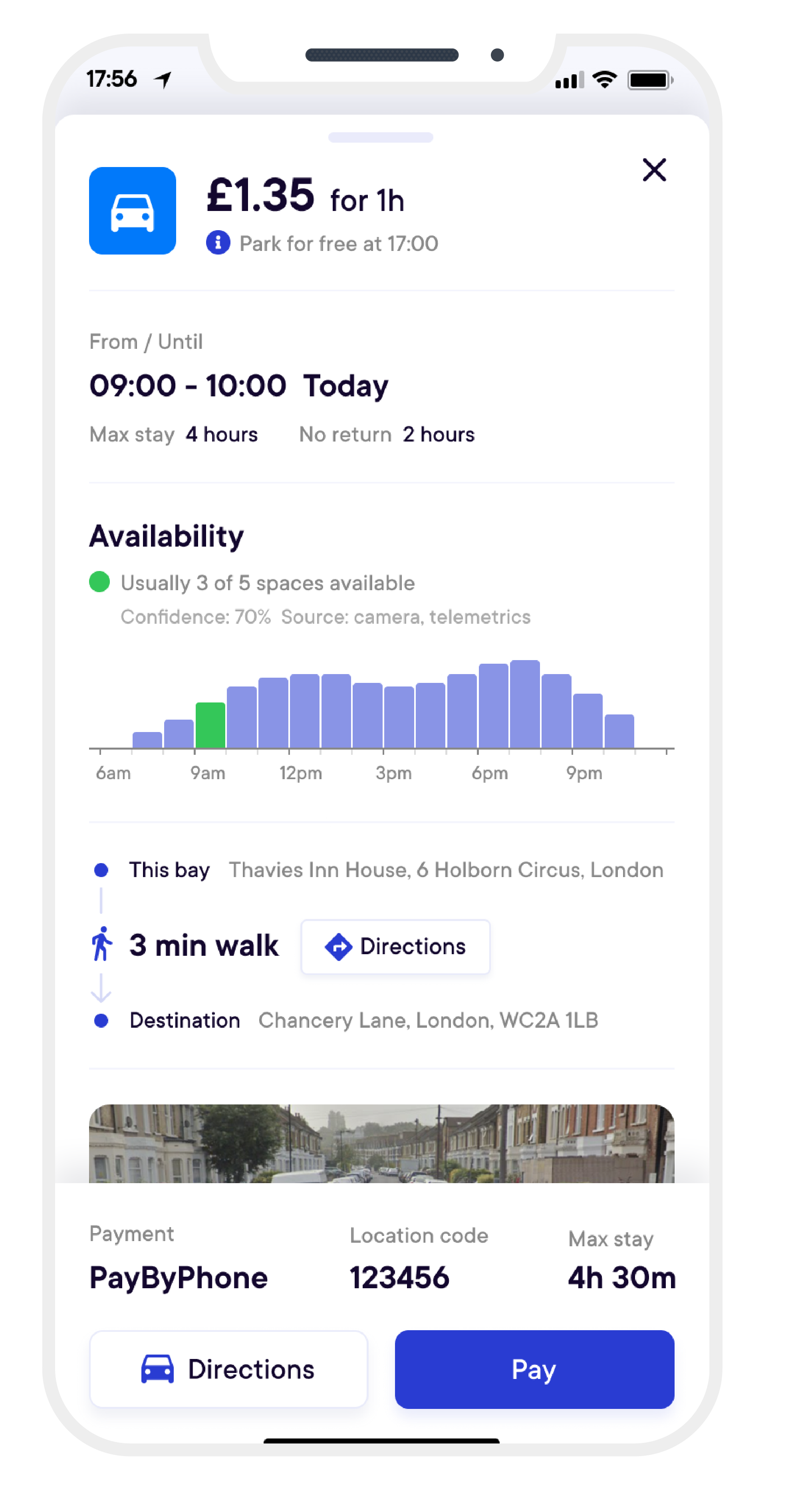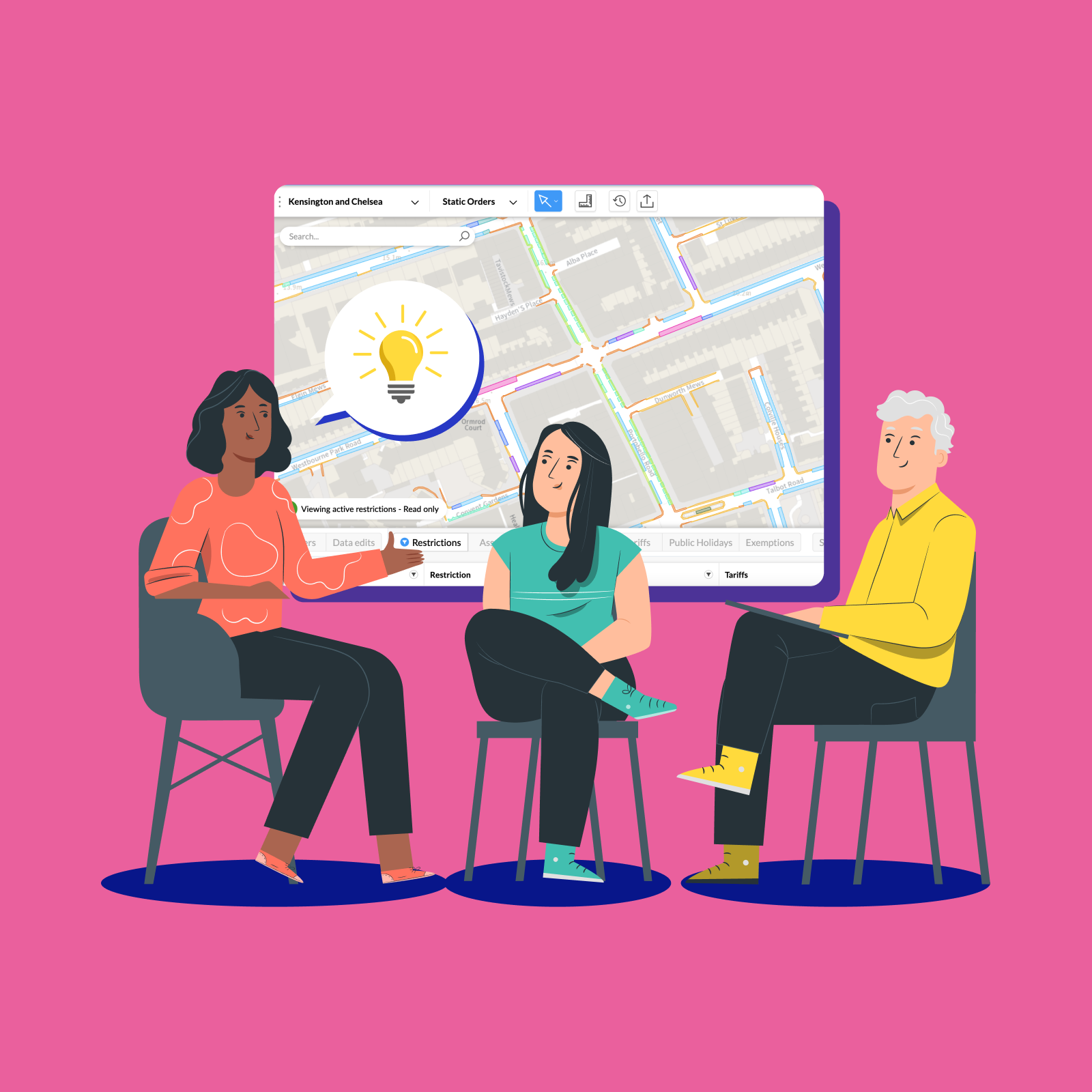Less urbanised areas often feel a bit left behind compared to their urban counterparts. Low population densities, high car ownership, poor connectivity, and reduced public services means that living in a rural or semi-rural area without a car can feel isolating and access to rural towns and villages challenging. New mobility initiatives that could tackle these problems have largely been launched and established in cities, however recent news and announcements suggest that these once urban trends are finding their way to the rural and semi-rural towns of the UK.
Covid-19 travel behaviours, the push for active travel and the need to meet net zero by 2050 are shaping mobility trends across the country. Through innovation funds and grants aimed at rural communities, councils in less urbanised areas are now able to consider what trends to adopt to suit their council areas. It’s through kerbside management practices and traffic order management that councils will ultimately be able to implement these new ways of moving and accessing their towns.
Read on as we highlight the four migrating kerbside trends in the UK and how councils can use traffic orders to facilitate more liveable, accessible rural spaces:
EV charging
With the government announcing the ban on the sale of new petrol or diesel vehicles by 2030 and setting out their goal of net zero by 2050, the electric vehicle (EV) market is expanding rapidly. Charging infrastructure has largely been focussed in larger towns and cities and access to charge points can be a ‘postcode lottery’ – for example the number of total public charge points per head in Yorkshire and the Humber is a quarter of those in London.

The UK currently has around 25,000 charge points and, while there is still uncertainty in how quickly the market will fully adopt EVs, forecasts suggest more than ten times this amount will be needed by 2030. Focus has turned to areas outside major towns and cities with EV charging providing a number of benefits for rural and semi-rural communities such as:
- An easier switch to electric vehicles for local residents
- Increased commerce through local tourism and regular traveler stopovers, as EV owners from urban areas will naturally avoid small towns if they don’t have access to charging stations
- A stable source of potential additional revenue for the community
- A boost to individual businesses where charging stations are installed, as potential customers who drive EVs will choose to do business where they can also conveniently charge their vehicles
- A stronger local economies
Of course, to implement on-street EV charging councils will need to make amends to existing traffic orders to ensure that parking spaces are transformed into EV bays and space is allocated for the charge point itself.
Fortunately things have been made a bit easier for authorities with Britain’s energy regulator this year approving a £300m investment spree to help triple the number of ultra-rapid electric car charge points across the country. This investment will cover rural areas, with some charging points aimed at commuters at train stations in north and mid-Wales. The investment aims to make car charging points more convenient and will help to address motorist “range anxiety”, which is frequently mentioned as a key reason why drivers are wary about choosing an electric vehicle over a fossil fuel model.
Micro-mobility
Often seen as very Silicon Valley, micro-mobility is making its way out of the urban areas and into the picturesque countryside and seaside towns of the UK. The slightly more established mode are bikes. Bike share schemes have proved successful and appear to be here to stay with a range of docked and dock-less bikes found up and down the country. The UK has close to 18,000 bikes in share schemes in 21 locations and averages around 47,000 journeys a day.
The latest form of micro-mobility to hit the streets is e-scooters. Trials have kicked off after some delay and hesitancy but can now be found in major cities and rural settings alike.
Micro-mobility can benefit communities by plugging gaps in public transport routes, often providing a quick and easy answer to a first-and-last-mile need. They can help to reduce car usage and congestion, and contribute to the more efficient use of shared public spaces. They are silent to use and low in emissions, bikes and e-scooters also provide substantial environmental benefits.
Micro-mobility has not been without its issues with some cities reporting problems such as bad and obstructive parking of dock-less bikes and scooters, and dangerous riding in areas of towns where alcohol is normally consumed. Overwhelmingly though, cities have responded positively to electric micro-mobility and have an understanding that these additions to their towns can help achieve their transportation goals and helps them to explore a more integrated and sustainable transport provision.
For the smaller towns across the UK that are currently trialling or looking to trial micro-mobility, flexible and digital traffic order or kerbside management will be crucial to alleviating these issues. Traffic orders can be used to geo-fence where and when micro-mobility is allowed to be parked. This can prevent bad parking and can be used to prevent instances of dangerous riding by preventing riders from riding to and parking in nightlife areas during the weekend.
In addition to managing rider behaviours and parking locations, traffic orders can be used to facilitate a sustainable rollout of micro-mobility. Traffic orders can respond to data based on key performance measures such as number of riders and number of rides per day. As demand increases, more bikes or scooters can be released and the kerbside regulation needed to accommodate this can then be rolled out. This allows for maximum accessibility with minimum disruption.
Real-time and predicted parking availability
An area where AppyWay have led innovation and something we are passionate about for improving town centre access and for reducing congestion during peak travel times – real-time and predictive parking has come a long way in the last 5 years and is poised to make further leaps and bounds with the onset of 5G.
In January 2019 we launched the world-leading Smart City Parking Scheme in Harrogate which saw the the installation of smart sensors and the consolidation of digitised parking data, parking payments and ANPR barriers into a single solution that enabled a totally seamless experience for users of our mobile app.
The user experience for drivers was game-changing, allowing them to find available on-street or off-street parking with real-time availability, and start and pay for parking sessions that end automatically when they drive away with a single click.
The local authorities, Harrogate Borough Council and North Yorkshire County Council can see how their parking assets are consumed through our web-hosted analytics platform which exposes live parking utilisation data for all on and off-street parking spaces thanks to our smart parking sensors.
In the West Midlands and Ebbw Vale in Wales, we’re taking our real-time technology one step further. We’re using 5G to provide sensor-less, real-time and predictive parking availability via our driver app. Both of these projects see vehicles equipped with the capability to transfer dash cam imagery via 5G through the AppyWay algorithms to provide drivers with real-time and predictive availability data. You can read more about these projects a little later on the eBook.


Real-time availability and predicted availability in the AppyWay app.
Crucially, these real-time and predictive parking innovations require digitised parking information only made possible via digitised traffic orders. The move to digitised traffic orders will become increasingly important for councils who wish to adopt innovation such as real-time and predictive parking availability.
Developing data standards
Over the coming years harmonising the data standards upon which various types of mobility innovation are based will be necessary for different providers, integrators and local governments to push forward with transport innovation.
Currently a lack of standardisation has meant essential system integrators such as enforcement and cashless payment providers are struggling to work efficiently with authorities because the data is not in a machine readable format. An example is the recent Ordnance Survey mapping transformation, which required GIS data to be updated in bulk, but with the siloed set-up, this was not an option. This further hindered an authority’s ability to process, manage and provide consistent access to vital traffic order data.
There is growing pressure to serve traffic order data in a way that consumers, fleets, and innovators can use to find solutions and address pressing concerns like rising emissions and the climate emergency.
The private sector is desperate for access to standardised kerbside data. From navigation to optimisation, developers and innovators are primed and ready with ideas that would enable towns and cities to thrive but with data inaccessible, organisations are being forced to collect this data manually. Collecting data in this way means it can get outdated quickly and gives local authorities no control when out of date information is shared with the public.
Much is being done to shape the future of traffic order data, particularly in the realm of digitisation and standardisation. August last year saw the DfT publish their study into the processes and practices of Traffic Regulation Orders, including suggested areas for improvement to the legislative process in England. Driven by the study’s recommendations, the DfT have begun a Traffic Regulation Order Data Model (TRO-DM) Alpha to develop a traffic order data publication and distribution system.
The outcomes from the Alpha are yet to be published but we know that standardisation will bring a wealth of benefits for both urban and rural areas alike, allowing them to tap into innovation that can create accessible, liveable and sustainable towns.




